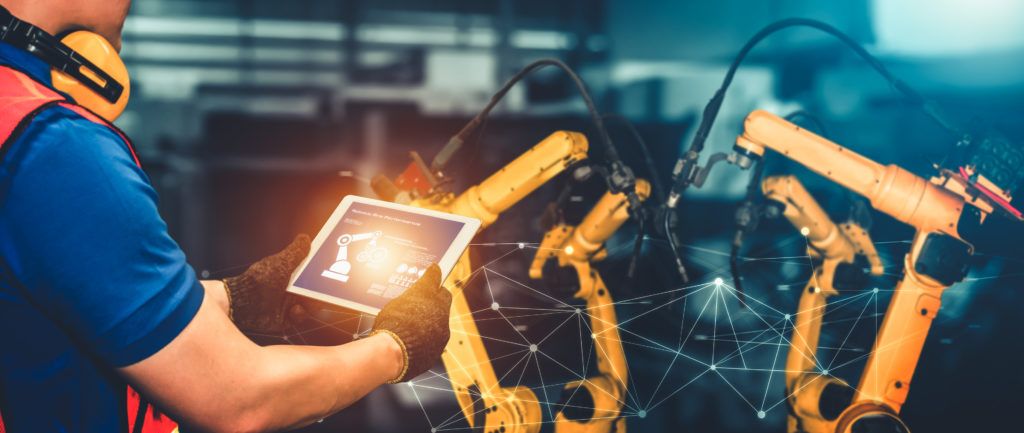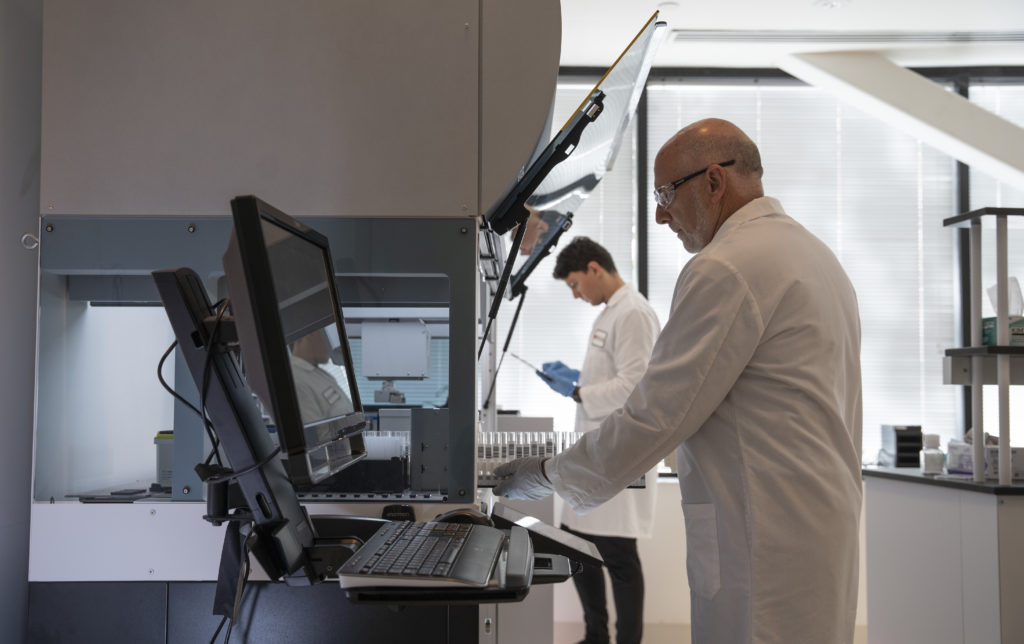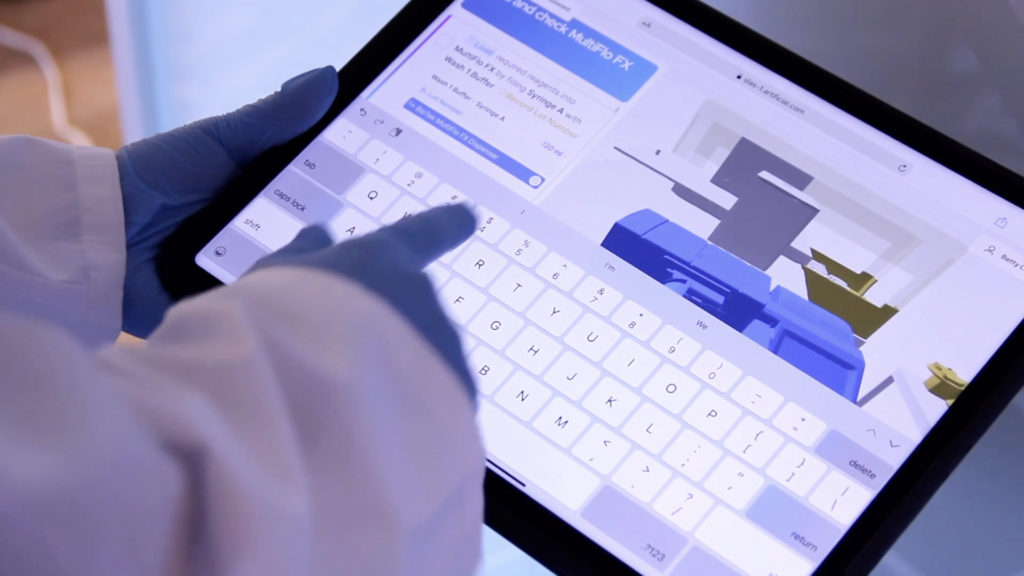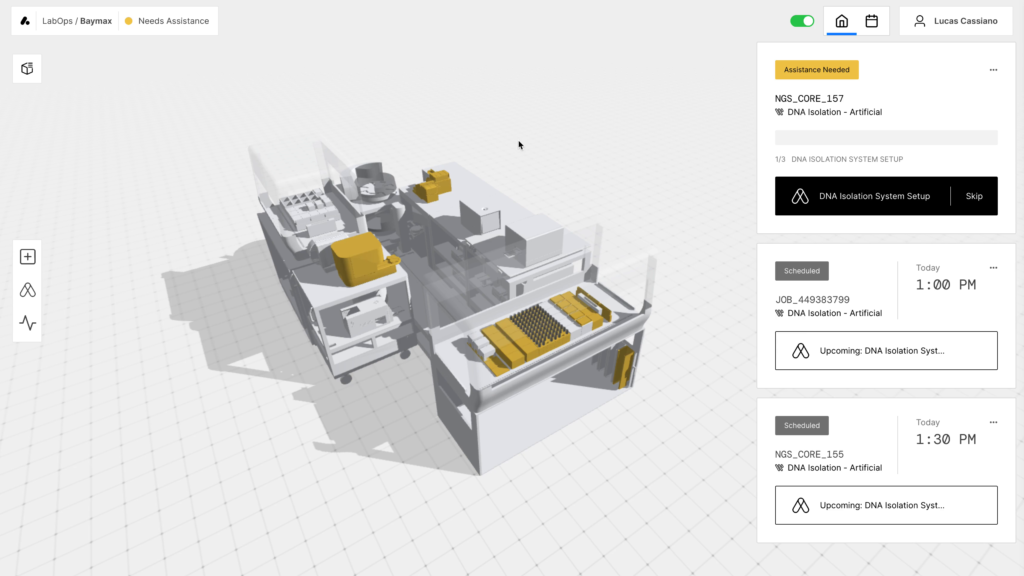Targeting genes to prevent disease, propagating cell lines for drug discovery, and identifying antibodies for drug development is already complex. Yet, the scientific teams focused on solving these mysteries must also address operational challenges like human errors during manual operations, high personnel turnover, and long training times. At Artificial, we believe these problems can be prevented or at least ameliorated if labs are equipped with digital solutions that bring humans in the loop. With these tools, people are empowered to drive and leverage automation to achieve their goals.
What does human-in-the-loop even mean?
Human-in-the-loop is a term often used in AI and robotics industries. It refers to the blending of the capabilities of people and technology like AI and automation to solve a problem because it is understood that while technology is efficient at completing some tasks, other tasks are better suited for people to solve.

When AI or automation is used to crack an algorithm or mass manufacture cars, human-in-the-loop solutions provide a seamless way for people to influence or intervene in the process easily. As a result, people can correct a system’s bias or gain a greater understanding of their process to increase the accuracy or efficiency of this technology.
What does bringing humans-in-the-loop mean for biopharma?

The reality is science is complex and nothing like mass manufacturing cars. Science can even be finicky, so even when labs are automated, people will always be needed to push science forward - whether that’s completing the manual steps to operate these systems or deciding if an experiment is ready to proceed. However, scientific teams are still working alongside lab automation, instead of working together. So while lab instrumentation and robotic arms run on scripts, lab personnel and their tasks remain siloed without data exchange even when they are captured in an ELN or LIMS.
We believe that the biopharma industry must take a multi-layered approach to truly put the people at the center of their science and maximize the benefits of automation.
Creating a Digital Experience for the People
As a first step, the people working in these labs must operate in the same realm as its technology - the digital world. Simply taking the manual tasks performed by people and transforming them into a digital experience can provide immense productivity gains. Like using a Maps app on our smartphones to navigate directions, scientific teams can have the same intuitive and interactive experience with lab automation. Scientists can receive specific instructions that update in real-time, so it’s easy to understand the required steps. By reducing confusion, these guides can prevent mistakes and reduce training times, which help decrease the impact of high personnel turnover.Increased visibility and audit-ability for reproducible results
By digitizing the manual functions within the lab, critical procedural information can be automatically recorded. Data such as lot numbers or plate barcodes can be captured in a digital log as each step is completed. This running record allows labs to have an audit trail of their activity making it easier to reproduce an experiment, troubleshoot unexpected data, and capture operational metrics such as the time to complete a task. All of these insights can help labs scale their operations as they go from R&D to production.Elevating a lab’s operations with orchestration and standardized data
To truly bring the human in the loop though, people's actions must be integrated on the same platform that runs the technology used in the lab. This way, when a job is scheduled, the automation and manual work are timed and scheduled in one workflow without taking additional steps. Teams can know exactly when and how to intervene so they can use their time more efficiently.The ability to orchestrate manual and automated activities together also means the data generated by these activities are associated. By structuring and organizing all of a run’s metadata, scientists can more quickly analyze and understand their results. Furthermore, labs can create an interchange between the data generated by human actions and automation so that people and automation can be influenced in real-time to operate more intelligently and efficiently.
How Artificial introduces humans-in-the-loop
Assistants - a data connectivity dark horse

Addressing table stakes, Artificial Assistants transforms manual SOPs into interactive instructions linked with a Digital Twin. These tasks are augmented with photos/videos, data fields, and warnings, so each step is contextualized with expert guidance. To truly bring people in the loop to understand and control their automation, Artificial Assistants exchange data with the key elements of their lab such as LIMS/ELN and the hardware.
With LIMS/ELN connectivity, Assistant step quantities such as the number of tips, reagent volumes, or other critical protocol parameters are automatically updated in real-time based on the number of samples in a request. This connection also means key data generated during manual operations such as lot numbers or plate barcodes can be collected and automatically updated in a LIMS/ELN data record.
Artificial Assistants also transmit key data between instrumentation and workcells such as where samples are located, so the inventory in automation protocols are updated. This information exchange means that each Assistant step can be augmented with a Digital Twin that updates its models to reflect changes in the setup so operators know exactly what to do.
The connectivity of Assistants with a lab’s hardware and software means people can influence their hardware and capture data simply by focusing on their manual tasks.
LabOps - orchestrating people, automation, and data

Artificial also provides LabOps - a scheduler that orchestrates automation with the required manual work. So, when a job is submitted in Artificial directly or from an external LIMS, LabOps creates a workflow that schedules any relevant Assistants with the automation methods and scripts. As a result, any generated data via the Assistants or automation are automatically associated and organized together in a record accessible from Artificial or a LIMS/ELN.
By orchestrating the entire lab operations, LabOps consolidates data in real-time so scientists can monitor their work in an intuitive Digital Twin. At a glance, someone can understand at any given time if an instrument is running or in error and where their sample is located.
Are you ready to make your automation work for you rather than create headaches for your team? Schedule a workflow review with one of our Automation Consultants today to see how Artificial helps you wrangle your automation.